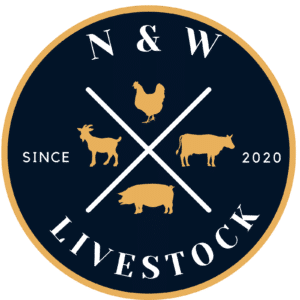Agribusiness Trends to Look Out for in 2022: What to Expect in the World of Agriculture
Written by openbusinesscouncil •Thu Sep 08 2022

The world of agriculture is constantly evolving, and in order to stay ahead of the curve, it’s important to be aware of the latest agribusiness trends. In this blog post, we will discuss some of the most important trends that are expected to take place in 2022. Whether you are a farmer, business owner, or agricultural worker, these trends will have an impact on your industry!
The role of robotics in shoring up supply chains
The role of robotics in shoring up supply chains is one of the most important agribusiness trends to watch out for. The use of tractors is still in need of manpower, although automated tractors exist, they are still not widely used in agriculture. If you take a look at the Tractor Library, you will see that more than 90% of the machinery still requires a driver.
So, with labor shortages and an increased demand for food, robots are being used more and more in agriculture. They can perform tasks such as picking fruits and vegetables, herd livestock, and even milk cows! This trend is expected to grow in popularity in the coming years as the technology continues to improve.
Vertical farming
Another big trend that is expected to take place in 2022 is the rise of vertical farming. This type of agriculture involves growing crops in vertically stacked layers in a controlled environment. Vertical farms use less land and water than traditional farms, and they can be located near urban areas, which reduces transportation costs. This trend is being driven by the need for more efficient and sustainable agriculture methods.
Data

Data Finally, the trend of using data to drive decision-making is expected to continue to grow in popularity. Farmers are using data from weather sensors, yield monitors, and GPS systems to make decisions about planting, irrigation, and fertilization. This data can also be used to track trends over time and make predictions about future crop yields. This information is becoming increasingly important as the world faces challenges such as climate change and population growth.
The internet of things and improved sustainability
In the same vein as robotics, and within the agritech space, the use of IoT technology promises to help make agriculture and agriculture supply chains more efficient and, in turn, more sustainable.
IoT
IoT technology refers to the interconnectedness of physical devices and sensors that are able to collect and share data. In agriculture, this data can be used to track everything from weather patterns and soil moisture levels to livestock health and crop yields. This information can then be used to make decisions about irrigation, planting, and even harvesting.
IoT technology is already being used by some of the biggest names in agriculture, such as John Deere and Monsanto. But it is expected to become even more widespread in the coming years as the technology continues to develop and become more affordable.
Blockchain
The use of blockchain in agriculture is also expected to grow in popularity. Blockchain is a distributed database that allows for secure, transparent, and tamper-proof transactions. This makes it ideal for tracking food items throughout the supply chain from farm to table.
In the past, blockchain has been used primarily in the financial sector. But its potential applications in agriculture are vast. For example, blockchain could be used to track the provenance of food items, ensure food safety, and even help farmers get better prices for their crops.
Plant-based alternatives continue to grow
The trend of plant-based alternatives is also expected to continue to grow in popularity. This includes both plant-based meat and dairy products as well as ingredients made from plants.
The market for plant-based meat is expected to reach $85 billion by 2030, up from $12 billion in 2019. This growth is being driven by the health benefits of plant-based diets as well as the environmental impact of animal agriculture.
Meanwhile, the market for plant-based dairy is expected to reach $35 billion by 2024, up from $13 billion in 2018. This growth is being driven by the increasing number of people who are lactose intolerant or have vegan diets.
Waste reduction and sustainability
Finally, the trend of waste reduction and sustainability is expected to continue to grow in popularity. This includes both reducing food waste and making agriculture more sustainable.
One way to reduce food waste is to use technology to track food items throughout the supply chain. This information can be used to make decisions about when and where to distribute food so that it doesn’t go to waste.
Another way to reduce food waste is to change the way we think about food. For example, some companies are using “ugly” fruits and vegetables in their products instead of throwing them away. And some restaurants are starting “scrap menus” that use ingredients that would otherwise be thrown away.
Meanwhile, the trend of making agriculture more sustainable is also expected to continue. This includes using more sustainable farming practices, such as regenerative agriculture, and investing in renewable energy sources, such as solar and wind power.



